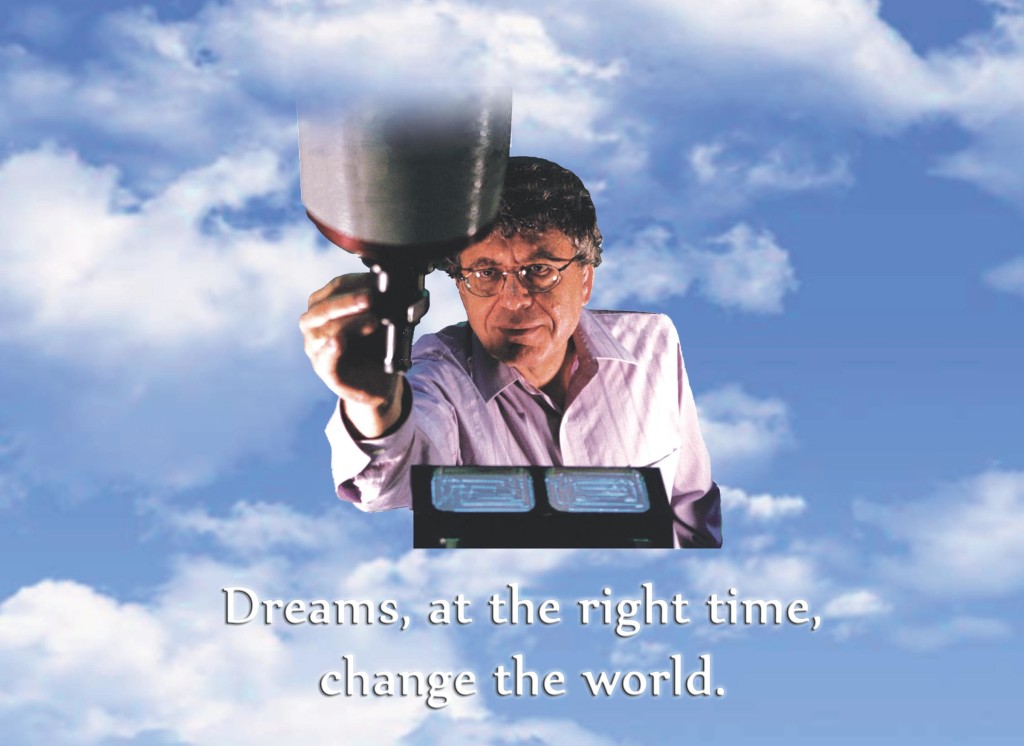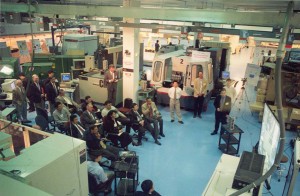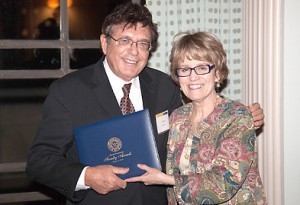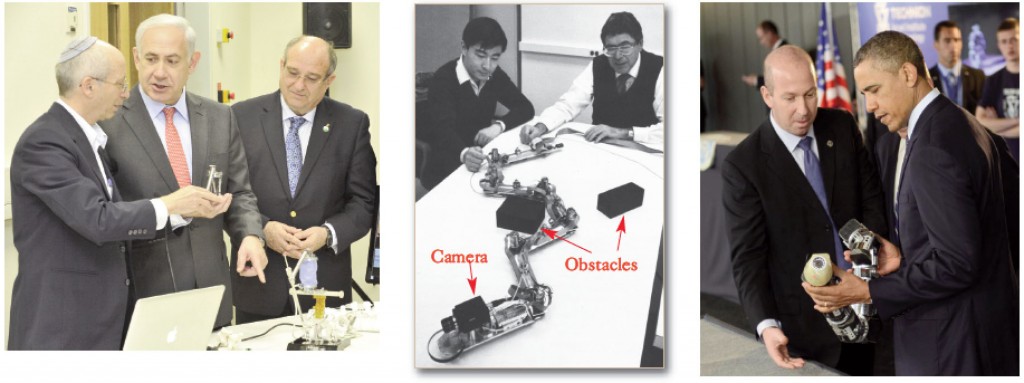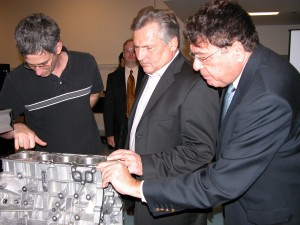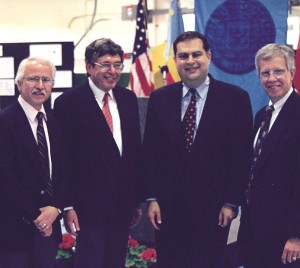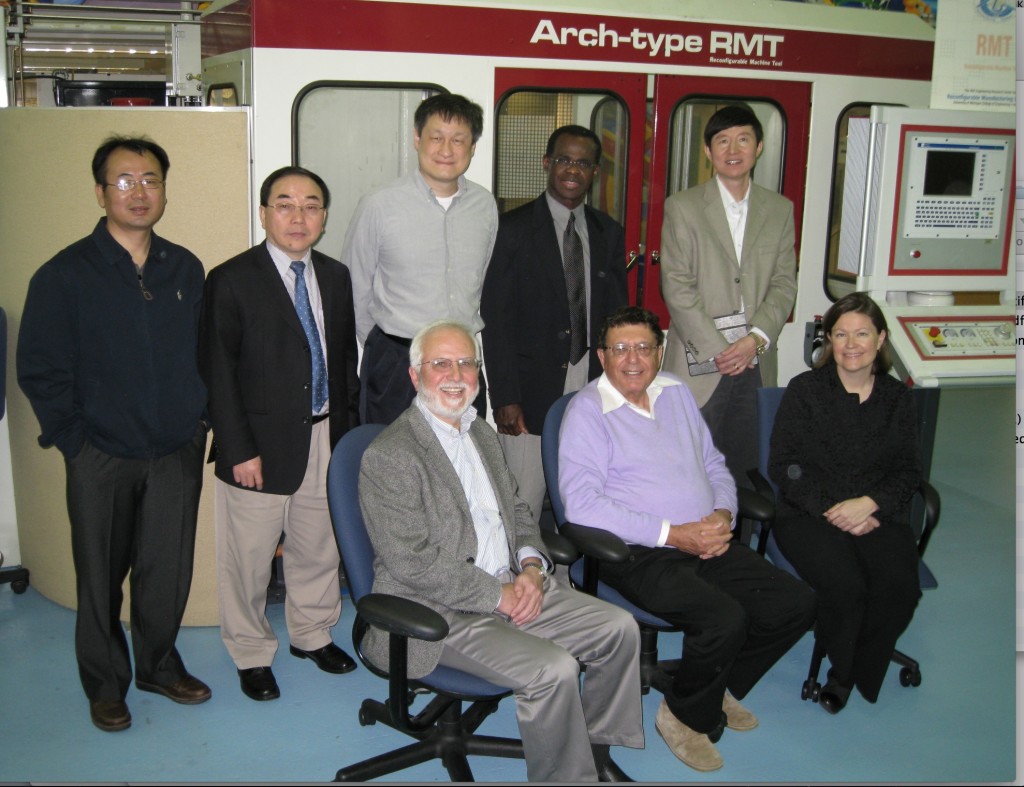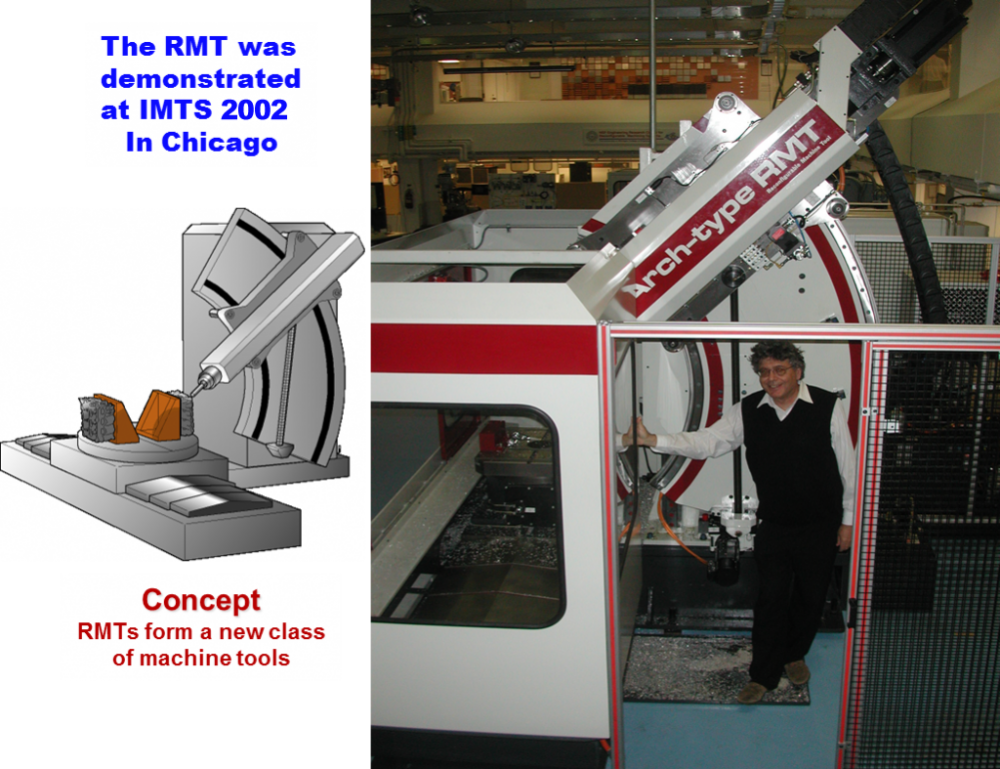James J. Duderstadt Distinguished University Professor Emeritus of Manufacturing
Paul G. Goebel Professor Emeritus of Engineering
Director, NSF Engineering Research Center for Reconfigurable Manufacturing Systems (1996–2012)
http://erc.engin.umich.edu/
The University of Michigan
GG Brown Building
Ann Arbor, Michigan 48109-2125
Email: [email protected]
Phone: (734) 936-3596
Professor Koren is credited with coining the term “Reconfigurable Manufacturing Systems” (RMS) as well as creating the scientific underpinnings of the reconfigurable manufacturing paradigm, and defining the RMS characteristics. He is best known as “The Father of Reconfigurable Manufacturing Systems.” He coined the term “Reconfigurable Manufacturing System” in his 1995 Engineering Research Center (ERC) proposal to NSF. There he defined RMS as a manufacturing system, which has “exactly the production resources needed, exactly when needed.” (See the term on RMS in Wikipedia.)
The NSF awarded Koren’s proposal, and in 1996 established the ERC for Reconfigurable Manufacturing Systems (ERC-RMS). The ERC-RMS was the first NSF-sponsored ERC that the College of Engineering at the University of Michigan won! This was formally recognized as a major milestone in the U-M College of Engineering 150-year history.
In recent years RMS has become a worldwide research discipline with practical implementations. There are over 100 powertrain factories in the U.S. that produce automotive engines and transmissions. Today, most of these factories are designed according to the RMS principles and the RMS system-architecture, and possess the RMS characteristics (such as: Design for Scalability; Design for in-line Diagnosis). Both manufacturers and consumers enjoy the RMS invention.
Long before his RMS invention, professor Koren established the intellectual foundations for computer numerically controlled (CNC) machines. Koren’s invention is highlighted on the U-M 200-year Research Milestones chart (http://research.umich.edu/research-milestones):
“In 1973 Yoram Koren invented the world’s-first computerized real-time adaptive controller for a milling machine, long before computers were commonly used in industrial applications. Before his work in the 1970’s, numerical control of machine tools was more of an art than science.”
Koren’s research on the synthesis and analysis of CNC systems established a scientific approach to the development of CNC systems. Many today’s CNC systems make use of the tools that Koren developed.
Koren has had remarkable contributions to robotics, and in particular autonomous mobile robot. One of his papers on this topic has over 2,000 citations. and had an enormous impact on the design of autonomous mobile robots. He holds the US first patent on inflatable robot arms, and developed the world’s-first robotic snake (1991). He developed robotic-aids for the disabled, such as a wheelchair that negotiates obstacles on its way and takes over the wheelchair control from the person in dangerous situations.
Yoram Koren is the JJ Duderstadt Distinguished University Professor (DUP) Emeritus of Manufacturing. Being a DUP is the highest honor that can be awarded to a faculty member at UM. Koren is a member of the US National Academy of Engineering (NAE), a Fellow of CIRP, SME, ASME and IEEE, and received 20 major awards during his career. Koren has published 4 original books and 300 scholarly papers. According to Google Scholar’s Author Profile, Koren’s papers have 28,000 citations (h-index 72). He holds 14 U.S. patents: seven on reconfigurable systems, and additional seven patents on robotics and flexible automation. During his career at the University of Michigan, Koren was awarded and managed over $50 million in grants and contracts.
Professor Koren was the Director of the NSF Engineering Research Center for Reconfigurable Manufacturing Systems (ERC-RMS) for 16 years, since he established the Center in 1996 until 2012. The ERC-RMS has created the largest academic manufacturing R&D testbed in the US, which was inaugurated by US Senator Spencer Abraham in October 1998. Several thousands prominent researchers and politicians visited the ERC-RMS testbed during the years. The total funding for the ERC-RMS from 1996 to 2012 was $47 million. Funding sources: NSF $33M, Industry $10M (in cash), and the rest from the state of Michigan, DoD, DoE, and SBIR.
In summary, Koren’s research accomplishments in his 40-year career covers three major topics:
1. Reconfigurable Manufacturing Systems (RMS):
- Conceiving the RMS paradigm, creating its scientific underpinnings, defining the RMS architecture and characteristics
- Inventing Reconfigurable Machines and Reconfigurable Inspection machines (patent holder)
- Implementing RMS optimization methods, machines, and software packages on 69 production lines in 15 U.S. factories of the automotive and aerospace industry
2. CNC & Automation:
- Developing the scientific basis of CNC system design and CNC interpolation algorithms
- Inventing adaptive control of machine tools for process optimization, and inventing the Cross-Coupled Control
- Formulating feedback-based tool wear models of cutting tools
3. Robotics:
- Pioneering autonomous motion algorithms for mobile robots, and building an extremely fast autonomous moving robot that was featured on CNN in 1988.
- Developing robotics-aided devices for the disabled (Shared-control wheelchair; Navigation-belt for the blind)
- Inventing the world’s-first snake robot and inflatable robots (patent holder)
Prof. Koren believes in creating peace between warring countries by cooperation between students in both countries on projects in product design and its production (see Publications: Technology for Peace). This would be peace from the bottom up. People who don’t have reasonable jobs could be easily motivated to fight. People who have good jobs tend to live in peace. Production factories provide a whole range of diverse jobs that fit a variety of skill levels, from entry-level factory workers to engineers and business professionals. Production engineering may be a catalyst that speed up the world’s peace process.
The official Report of the NSF Review Team (composed of industry and university experts)
that conducted 3-day site-visit of the ERC-RMS in 2007 states:
“The RMS testbed at U-M has the most comprehensive capabilities
of any such facility in the US, rivals similar facilities in Europe.”
An NSF site-visit is conducted at the ERC-RMS testbed
that was designed and built by Yoram Koren
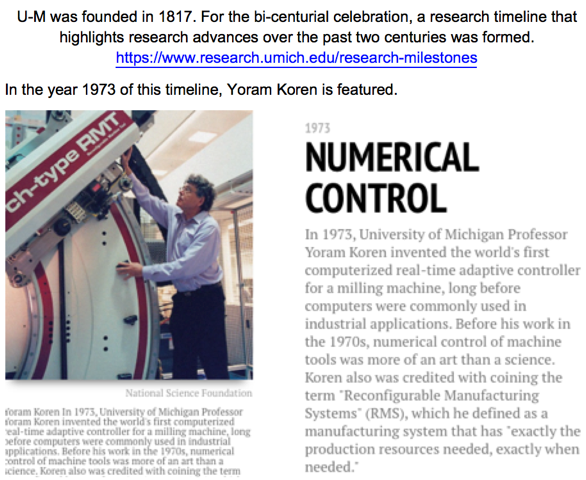
University of Michigan President Mary Sue Coleman congratulates Yoram Koren,
on receiving a Distinguished University Professorship. 2010
Three Generations of Innovative Robots
I. Middle: Yoram Koren invented the world’s-first snake robot, 1992
II. Left: M. Shoham, Koren’s PhD student (1985), shows his surgery robot invention to PM Netanyahu
III. Right: Alon Wolf, Shoham’s PhD student, shows his snake robot invention to U.S. President Obama
Aleksander Kwasniewski (middle), former president
of Poland (1995–2005), visited Koren’s RMS lab in 2006.
U.S. Senator Spencer Abraham (second from right)
inaugurates the ERC-RMS testbed (October 1998),
with Yoram Koren (second from left)
U-M former President James J. Duderstadt (right), and Yoram Koren (middle)
View of the ERC/RMS testbed that Yoram Koren designed and built at the University of Michigan
Faculty leading the ERC-RMS (2005)
Standing (L to R): Wencai Wang, Jack Hu, Albert Shih, Elijah Kannatey-Asibu, Jun Ni.
Sitting (L to R): Galip Ulsoy, Yoram Koren, Dawn Tilbury.
Yoram Koren and his invention, the Arch-Type Reconfigurable Machine Tool (RMT)
which is based on Koren’s patented design (US patent 5,943,750, 1999).
With just 3 controlled axes, the RMT can machine engine blocks and cylinder heads
at -15, 30, 45, and 60 degrees, whereas 5-axis machines are typically doing such jobs.
(The RMT was demonstrated for 3 days at the International Manufacturing Technology Show in Chicago in 2002).

